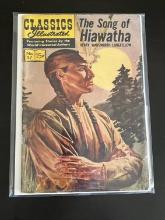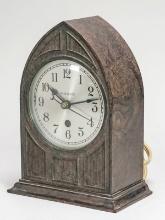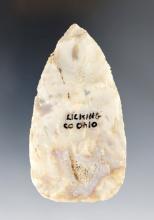8d 22h Left
Pair of Cones, both were found in Franklin Co., Illinois by Bill Withrow.$10.00{"message":"In _app.tsx child of Layout","renderCount":1}
Earliest Obtainable Printing of the Bill of Rights
Lot Closed
Auction by Keno Auctions
This item is in New York, NY
Similar Items
1d 19h Left
SUPERB! 3 3/4" Adena - Carter Cave Flint - Bucyrus, Crawford Co., Ohio. Ex. Karl Dunn, Kevin Kelly.$60.008d 22h Left
Hardcover Book: "Collectors of Historic & Prehistoric Artifacts" by Bill &Linda Ballinger.1d 19h Left
2 7/8" Ohio Dovetail with nice mineral deposits on the surface.$11.0012h 35m Left
Opening Day by Mahler, Yuval7d 22h Left
Patrick Demarchelier SIGNED 2008 Ltd Edition 12/150 In Clamshell Box .$850.007d 2h Left
History Book $2 STS1d 19h Left
3 1/16" Adena found in Mahoning Co., Ohio. Ex. Tiell, Paul Hothem. Speckled grade of Coshocton.$90.0012h 35m Left
Contessa by Smirnov (1953-2006)1d 19h Left
Incredible flaking on this 2 3/16" Thebes Bevel found in Ohio.$170.001d 19h Left
Fine 3 1/4" Adena - Preble Co., Ohio. Flint Ridge Flint with heavy mineral deposits on the surface.$20.0023d 4h Left
Classics Illustrated #10 Robinson Crusoe 1964 Silver Age Key Cited in Seduction of the Innocent2d 5h Left
BILL COWHER SIGNED 8X10 PHOTO BROWNS COA1d 19h Left
5 3/4" Full Groove Axe found by Bill Steele - Alexander Co., Illinois. The bit is highly polished.$30.001d 19h Left
Incredible color! 3 5/16" Adena Cache Blade - Ohio. Flint Ridge. Ex. Hovan, Converse, Kelly.$120.001d 19h Left
3 1/16" Hopewell Cache Blade - Licking Co., Ohio by Terry Yarion on the Irwin Farm.$170.001d 19h Left
3 5/8" thin and well flaked Diagonal Notch - Seneca Co., Ohio. Minor modern tip retouch .$14.001d 19h Left
3 3/8" Hopewell Blade made from vividly colored Flint Ridge Flint. Found in Logan Co., Ohio.$60.008d 22h Left
Nicely polished 4 3/16" Celt found in Jefferson Co., Illinois. Ex. Bill Price, Steve Healy.1d 19h Left
4 7/16" Adena Trapezoidal Pendant - Crawford Co., OH. Ex. Mike Kiel, David Root (1328S).$180.001d 19h Left
Translucent 2 7/16" Dovetail - Flint Ridge Moss Agate. A beautiful piece. Ex. Jack Hooks.$250.001d 19h Left
2 3/4" Thebes found in Union Co., Ohio. Steeply beveled and well styled. Patinated Coshocton.$275.00Overview of Earliest Obtainable Printing of the Bill of Rights
Item Details
Earliest Obtainable Printing of the Bill of Rights
To ensure ratification of the Constitution, the founding fathers promised that Congress would address guarantees of specific liberties in their first session.
[BILL OF RIGHTS]. Newspaper. Gazette of the United States. October 3 [misprinted “October 1,” corrected by hand], 1789. New York: John Fenno. 4 pp. 10 x 16 in.
Estimate $30,000- 60,000
After months of discussion and debate, on September 24-25 the Senate and House of Representatives approved the final text of proposed amendments to the Constitution. Three days later, on September 28, the House examined the final copies, “found the said bills and articles of amendment…to be truly enrolled,” and Speaker of the House Frederick Muhlenberg signed the copies to be sent to the states for ratification. The first two articles were not ratified at the time, so articles three through twelve actually became the Bill or Rights upon Virginia’s approval on December 15, 1790.
Just one day after President Washington sent official copies to the states for ratification, the Gazette of the United States printed the full text of proposed amendments to the Constitution in its final form. While there is at least one known newspaper printing from October 2, we have never seen an example on the market.
The Gazette of the United States, printed in New York City when it was the nation’s capital, is often considered the most significant newspaper of the 18th century. During the formative years of the new federal government, the Gazette was a champion of federalism. Most early acts of Congress and the presidential actions and pronouncements were first printed in this newspaper.
The lack of a Bill of Rights—a central feature of most state Constitutions—was a principal criticism of the recently-drafted federal Constitution. To ensure ratification, the delegates to the Constitutional Convention promised that the Congress would address guarantees of specific liberties in their first session. Additionally, during the ratification process, five states approved the Constitution and passed along lists of proposed amendments. Two states that had refused to ratify (Rhode Island and North Carolina) nonetheless suggested amendments. In all, nearly one hundred discrete amendments were offered.
At first lukewarm to the idea, “father of the Constitution” James Madison campaigned on a promise to fight for a Bill of Rights. On May 4, 1789, Madison told the House of Representatives he planned to present a slate of amendments three weeks later. When May 25 arrived, Congress was debating import duties, so Madison demurred until June 8, when the House again rebuked his efforts. Rising once more, Madison apologized to his colleagues and introduced his proposals.
On July 21, 1789, the House formed the Committee of Eleven (one member from each state—Rhode Island and North Carolina had not yet joined the Union) to consider the proposed amendments. The Committee made its report on July 28, taking the nine broad areas Madison had suggested for amendment and drafting 17 individual amendments for House approval. These passed the House on August 24, and the Senate began their debate the next day. The Senate passed its own version with 12 amendments on September 9. Wrangling over language continued for the next two weeks in committee, mostly over what would ultimately become the 1st and 6th Amendments. The House agreed on September 24, the Senate the next day, and the official copies were signed on September 28.
Then, twelve articles of amendment were sent to the states for ratification on October 2, 1789. Two of the twelve proposed amendments, the first regarding apportionment of representation in the House and the second, congressional salaries, were not ratified by the states, so only articles three through twelve became the first ten amendments. However, article #2, which stated that Congressional pay increases (or decreases) would not take effect until an election had ensued, eventually became the 27th Amendment on May 8, 1992, 203 years after it was first proposed.
Payment
Please contact the auction company for payment instructions.
CheckMoney Order
Auction Details
Auction House

Keno AuctionsNew York, NY




































